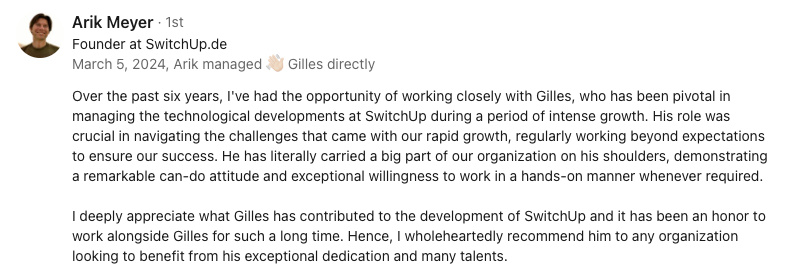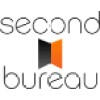Abstract:
The article explains how micro-collaborations—small, focused partnerships—can make testing new side-hustle ideas safer, less overwhelming, and more effective by sharing risks, getting fast and honest feedback, and leveraging complementary skills. It provides practical guidance on choosing trustworthy and diverse partners, protecting ideas legally with NDAs, and navigating employment contract restrictions to avoid conflicts with main jobs or intellectual property rules. The piece highlights minimalist business strategies, like co-hosting workshops or joint newsletters, which let busy founders run low-risk, time-efficient experiments without heavy commitments. Real-world examples, such as peer review sprints and shared pilot projects, illustrate how small collaborations can reveal blind spots and speed up learning. The article emphasizes setting clear goals, defining success metrics, and using structured feedback analysis to decide whether to continue, pivot, or end a project. It also stresses the importance of transparent communication, ethical boundaries, and maintaining relationships for future opportunities. Overall, it positions micro-collaborations as a practical, low-pressure way for entrepreneurs to validate ideas, learn efficiently, and build supportive networks—where even endings or pivots contribute valuable experience for the next venture.
Testing a new side-hustle idea is exciting, but let’s be honest—it can also feel risky and overwhelming, especially when you’re working alone. I remember the first time I tried to validate a side project while still working as a CTO in Berlin. I poured hours into building a prototype, only to realize (a bit too late) that I’d missed some obvious problems. Teaming up with a trusted partner changed everything: we spotted issues early, shared the stress, and got honest feedback before making any big commitments. Micro-collaborations, I’ve learned, are a smart way to experiment, learn quickly, and keep both your risk and investment low.
I want to share how micro-collaborations can make validating side-hustle ideas safer and more effective. You’ll see the practical benefits of sharing risk and getting faster feedback, why this approach fits with minimalist business thinking, and some simple steps for choosing a good partner. I’ll also touch on protecting your ideas, keeping things legal with work contracts, and designing small experiments that fit into a packed schedule. I’ll sprinkle in a few stories from my own journey—like running peer review sprints in Shanghai or managing a multicultural team in Beijing—because, frankly, nothing teaches you faster than real-world messiness.
If you’re just starting out or want a smarter way to test your next idea, these strategies offer a lighter, clearer path forward. Honestly, I wish I’d known some of this sooner.
Why micro-collaborations work
Shared risks and faster feedback
Trying out a new side-hustle idea can feel intimidating, especially when you’re on your own. Piloting a project with one or two partners changes the game. Instead of juggling all the risk and working endlessly by yourself, you split the workload and keep things simple. For example, you and a collaborator might each put in just a few hours per week to see if there’s real interest—no need for a huge commitment. This team approach cuts down on wasted effort and lowers the risk of investing in an idea before it’s proven. Having extra viewpoints helps you notice things you might have missed.
Working with trusted partners means getting outside opinions that can quickly show you blind spots. I’ve definitely gotten attached to a concept, only for my partner to spot a flaw or a new opportunity right away. One person might think an app works smoothly, while another sees where users might get confused. Extra voices make ideas better and keep you from getting stuck in your own bubble. With feedback coming from different places, you can adapt faster and your learning becomes more useful.
Micro-collaborations also speed up feedback cycles. You don’t have to wait for a big launch or rely on slow surveys. Instead, you get reactions right away through chat, calls, or a shared board. This real-time info lets you adjust quickly, long before anything goes public. These methods fit perfectly with a minimalist mindset: keep it simple, keep it focused.
Community-driven minimalism
Minimalist business owners focus on what matters most, and teaming up is a natural fit. By pooling resources—like a mailing list, research, or even just energy—you avoid repeating work and get further with less effort. This is especially handy if you’re juggling side projects with a busy day job.
Back when I was managing a multicultural team in Beijing, I saw firsthand how diverse feedback could save a project. We’d run quick, low-stakes experiments—sometimes just a joint workshop or a shared landing page—and the mix of perspectives always surfaced issues I’d never have spotted alone. Two partners might share the cost of a basic landing page or co-host a trial webinar, saving time and money. Collaboration also means the feedback you get is more honest, because everyone involved cares about how things turn out.
Testing your idea alone can leave you stuck in your own view. Collaborating opens up feedback from different opinions. Maybe you think a feature is essential, but someone else gives you a new perspective. Working together makes it harder to fool yourself and helps you learn what really works, faster. Why risk missing what could be obvious to someone else?
Micro-collaborations don’t have to be complicated. Co-hosting a workshop, running a joint newsletter, or testing a small workflow with a friend are all simple ways to spot real challenges—no public product launch needed. Starting with small steps in good company often works out best. Choosing the right partner is important for these mini-experiments to succeed, and starting small makes the journey easier to share.
Choosing partners
What makes a good collaborator
Picking a good partner for a micro-collaboration isn’t about finding someone just like you—it’s about finding someone who balances your skills. The best partners are trustworthy and bring something different, maybe tech skills, design, or a different network. This helps catch blind spots and makes the project stronger from the beginning. Besides skills, it’s also important to agree on your vision and how much risk you’re both comfortable with.
Look for:
- Trustworthiness and reliability: Pick someone who keeps their word.
- Complementary skills: Choose partners with strengths you lack.
- Shared vision and values: Being on the same page about success saves stress later.
- Openness to feedback: Willingness to give and accept constructive critiques helps you learn.
When you find these qualities, it’s simpler to work together and avoid friction.
Agreeing on goals and how much risk to take is crucial. If one person is eager to go fast and the other prefers taking things slow, there can be tension. Open communication about what everyone expects makes it easier to avoid future problems.
To set clear boundaries and avoid headaches later, I usually:
1. Talk openly about everyone’s role.
2. Decide how decisions will be made.
3. Agree on how to handle disagreements.
4. Set up a simple process for handling new ideas or changes.
Once you have a partner, it’s also smart to protect your work and check you’re following outside rules.
Protecting your ideas and staying compliant
When starting out, only share the basics of your idea at first—hold back on details until legal protections are set. A simple NDA template helps make things clear and avoid issues. Go step by step: discuss general ideas first, then specifics after everyone is comfortable.
Employment contracts can make things tricky. Many in tech jobs face rules about outside work or intellectual property, so it’s important to keep your side project and main job separate and never use company resources. Getting this wrong can cause real legal problems, or worse, threaten your main job.
If you’re unsure, talk to a legal expert or check official guidance for compliance. Being cautious is better than taking risks that could hurt your job. Once your partnerships and protections are in place, you can start building meaningful experiments with more confidence.
Designing smart experiments
Easy pilots for busy schedules
Keep experiments small and time-limited to test fresh ideas with little risk. Try something like a weekend peer review sprint, where you swap feedback with your collaborator, or co-host a short online event to check interest. These mini-pilots need little prep, are low commitment, and fit a packed schedule. Approaches like MVPs or short sprints make it simple to try things without overextending yourself.
Back when I launched a cross-border e-commerce platform in Shanghai, we ran a weekend peer review sprint that revealed a critical usability flaw before launch. If we’d waited for a big public test, we’d have wasted weeks and probably lost money. Sometimes, the smallest experiments save you the most pain.
Simple tools make things smoother. Shared to-do boards let you track tasks, and collaborative docs hold your plans and ideas. Messaging apps or regular check-ins keep the process moving. This setup keeps everyone up to date and makes it easier to spot what’s working or slowing you down.
Everyone should agree upfront on what success looks like. Set a handful of clear and measurable outcomes—maybe number of signups, quality of feedback, or whether a prototype works. Other things to look at:
- How many people attend or engage in your event
- Usefulness and clarity of feedback
- Technical feasibility of your idea
When you agree on what to measure, it’s easier to know if you should pivot, continue, or stop. Let’s see how this works in real settings.
Real-world examples of collaborative pilots
A peer review sprint is a quick way to get honest critiques of MVPs or landing pages. Here, you and your partner take turns reviewing each other’s work, focusing on how usable it is or what is confusing. This often catches problems that go unnoticed alone.
Running pilot projects together helps reach a wider audience. Testing a new workflow or service means you both involve your networks, gathering more feedback from different kinds of users. This is handy for business-to-business ideas, where diverse feedback helps you find a good fit.
Content ideas are easy to test in pairs. Co-hosted workshops or joint newsletter segments are simple ways to see what your audience likes. A short online event or guest spot in a newsletter quickly shows where interest lies, all without a big launch. These low-commitment approaches make experimenting and learning less risky.
Keeping experiments both ethical and within the rules is important, especially in regulated fields or when you have another main job. Follow the basics to keep projects safe and effective.
Ethics and compliance
Staying within the lines
Working on side projects with colleagues might feel like a shortcut, but crossing lines can have consequences. A key rule: never use your main employer’s resources, like code or data, for side projects. Even minor slips can turn into legal trouble and hurt your job.
Doing group projects with people from your day job brings extra risk. Employers often don’t like outside work between coworkers, especially if policies are strict. Accidental info leaks are easy, too—a passing message in chat might reveal more than you planned. Best to keep side-hustle chats and teammates separate from your main job.
Employment contracts often have hidden restrictions. Good habits include: keeping confidence, never sharing secrets, and using NDAs with your collaborators. Stick to higher-level talks until legal basics are sorted to protect everyone involved.
Navigating moonlighting clauses and IP concerns
Work contracts commonly have moonlighting clauses that limit or ban outside work, especially if it overlaps with your main job’s area. Before starting any collaboration, review your contract carefully. A quick list:
- Check restrictions
- Get advice if needed
- Confirm what’s allowed before going ahead
Intellectual property rules are another spot where side-hustlers can get tripped up. Employers sometimes claim ownership of anything you build related to their business. To steer clear of disputes, keep all side projects apart—use different devices and accounts from your main job.
Once you’ve sorted the boundaries, you can focus on learning from your experiment and collecting feedback.
Turning feedback into action
Making sense of partner-driven feedback
After a pilot, feedback can arrive in all forms—notes, surveys, messages, or shared docs. My background in fundamental physics taught me to look for patterns, so I like to collect everything in one spot and use clustering techniques to find key themes. I’ll read through, highlight repeated points and issues, and group similar comments to see patterns. Sometimes, I find myself thinking in French when writing these summaries—old habits die hard! Using sticky notes or a digital board for this clustering works well. This makes it easier to go beyond surface comments and find what really needs fixing.
Placing this feedback along your user journey helps make things obvious. Think of laying out the steps of your project and sticking each bit of feedback at the step where it happened. Visually, it shows where things get stuck, where users are happy, or where confusion stands out. This helps turn scattered reactions into a clear overall picture.
Mixing clear stories with simple numbers gives a balanced view. You might count how many users had trouble at one step, or note positives versus negatives. Blending the two helps take the guesswork out, making your next steps clearer and more confident.
Choosing a direction after feedback
Getting through all this feedback can feel like a lot, but prioritization methods can help. Tools like the MoSCoW method or a simple impact-versus-effort chart help you separate what matters most from minor suggestions. Focus first on what brings the biggest benefit for the least effort. With a prioritized list, knowing what to do next becomes easier.
Sometimes, it makes sense to keep going solo if people show strong interest and value. If the partnership is working well, expanding together might be the right move. The important thing is to keep checking if trust and aligned values are still there.
Not every pilot leads to a win. If the feedback is negative or unclear, it’s fine to change direction or call it quits. Honest talks and reviewing what worked or didn’t help avoid wasted time and keep the door open to future projects. A “stop, start, continue” review or an upfront exit plan makes things smoother if you need to part ways. Transparent and regular chats are what keep helpful partnerships alive, no matter the outcome.
Minimalist exit and pivot strategies
Setting clear exit and pivot criteria
One smart move in any collaboration is to set in advance when to continue, change course, or stop. You might pick a goal for users, a small revenue target, or simply mark a date to review. For example: “If we don’t get 50 signups in three weeks, we rethink our approach.” Writing this down keeps everyone focused and reduces stress. Having clear exit points keeps your collaboration purposeful and stops things from drifting.
Regular check-ins—a quick weekly review, for example—make it easy to see progress. These short talks let you ask: Are we on track? Need to switch gears? Keeping it short and frequent helps everyone stay honest and avoid surprises.
If you need to end things, do it with openness and thanks. Give credit, share learnings, and leave the connection on good terms. Writing down what helped or hurt can make the next project smoother.
Maintaining relationships and learnings
Taking the time to record lessons from a collaboration—what worked, failed, or surprised you—builds a personal playbook for the future. A shared doc or a quick summary session helps keep these learnings handy. This habit means you always start your next project a bit wiser.
Staying in touch with past partners is a smart habit. Even if projects end, these links can lead to new advice, introductions, or opportunities. Minimalist collaboration is about building a good network as much as chasing success.
Letting go of a project at the right time is not losing—it shows clear thinking and maturity. I’ll admit, ending a project can sting a bit. I’ve had to walk away from ideas I loved, but keeping the relationship warm has always paid off later—sometimes in the most unexpected ways.
Looking back at my own micro-collaborations, I can say that sharing the journey makes each step easier and smarter. By teaming up, you catch problems early, get honest feedback, and avoid pouring too much energy into the wrong things. Small tests and clear rules keep projects safe and easy to manage. And when a project ends, what you learn and who you meet often help you with your next big idea. Honestly, sometimes you just need to call it quits and grab a coffee—no shame in that. Each experiment, win or lose, builds your skills and confidence for whatever comes next.














